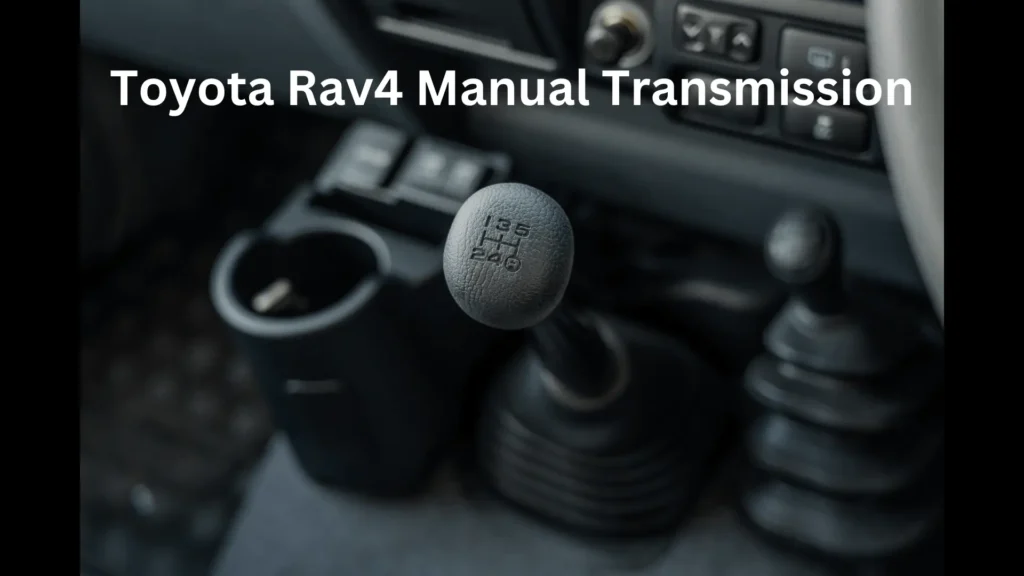Fans of driving enjoy the excitement of shifting gears in a car themselves. It gives them a better grip on the car’s power and performance. Because of this, lots of folks are curious if there’s a manual transmission option available for the RAV4.
Let me walk you through which RAV4 models offer a manual transmission, helping you pick the one that fits your needs. We’ll also explore the contrasts between automatic and manual transmissions. Plus, I’ll highlight some common issues with Toyota RAV4 manual transmissions that you should be aware of.
Modern Rav4 Transamission
In today’s RAV4 lineup, unfortunately, you won’t find the option to choose a manual transmission. While it’s not available in North America, it’s been offered in some other countries around the globe.
For the gas-powered RAV4, it comes equipped with a 2.5-liter four-cylinder engine matched with a Direct Shift 8-speed Electronically Controlled automatic transmission. This transmission is pretty smart too, with intelligence (ECT-i) built-in, along with a sequential shift mode, which adds to the driving enjoyment.
Now, if you’re leaning towards the hybrid versions, you’ll get to experience the Electronically Controlled Continuously Variable Transmission (ECVT), complete with a sequential shift mode for added control and excitement on the road.
Used Toyota Rav4 Manual Transmission
Looking for an older RAV4 with a manual transmission? Absolutely! You can track down a pre-owned RAV4 with a manual gearbox. Toyota offered this option in RAV4 SUVs from 1996 to 2005.
When you’re on the hunt, whether it’s online or at local dealerships, be sure to specify your search for manual transmissions. While there might not be as many to choose from, you might just stumble upon the perfect model that fits your requirements.
Manual vs Automatic
When it comes to transmissions in the RAV4, there’s a range of options to consider. From the traditional automatic transmission found in gasoline-only RAV4s to the electronically-controlled continuously variable transmission (eCVT) used in hybrid models, and even the manual transmission available in certain model years.
If you’re debating between automatic and manual transmissions for your RAV4, there are several factors to weigh. Firstly, if you’re eyeing a manual transmission, you’ll likely be looking at older RAV4 models. This means you might miss out on some modern features, and there are a few other things to keep in mind:
- Warranty might not be available unless you pay extra.
- Older RAV4s might not be as fuel-efficient as newer ones.
- Customizing features in a used SUV might be limited.
- There’s a possibility of additional mechanical issues that could require costly repairs.
Opting for a new RAV4 means you’ll get an automatic transmission with the latest technology, built for longevity.
However, if you’re still drawn to the manual option, or you’re curious about the differences, here’s a breakdown of the pros and cons:
PROS OF A MANUAL TRANSMISSION:
- Lower purchase price
- More control for the driver
- Often more fuel-efficient for comparable models of that year
- Improved acceleration
- Lower repair costs
- Better braking and stopping power
CONS OF A MANUAL TRANSMISSION:
- Requires practice to use effectively
- Coordination is needed with pedals and shifting
- Lower resale value (except for special models)
- Tedious in stop-and-go traffic
- Harder to find and control hills
- More prone to stalling
PROS OF AN AUTOMATIC TRANSMISSION:
- Less stressful driving experience
- Retains resale value well
- Easy to find, both new and used
- Great for stop-and-go traffic
- Simple to operate, even for beginners
- Shifts automatically without driver input
- Smooth and quick shifting
CONS OF AN AUTOMATIC TRANSMISSION:
- Higher initial purchase cost
- Repairs tend to be more expensive
- Generally less fuel-efficient than manual counterparts
You should also check: Toyota Rav4 Coolant Capacity (Explained)
Manual Transmission Problems
Manual transmissions, while offering a more engaging driving experience for some, can also come with their fair share of problems. Here are a few common issues that manual transmission owners might encounter:
- Clutch Wear and Tear: The clutch in a manual transmission car can wear out over time due to frequent use, especially if the driver frequently rides the clutch or doesn’t shift smoothly. This can lead to difficulties in engaging gears or even complete clutch failure.
- Gear Synchronizer Problems: Manual transmissions rely on gear synchronizers to match the speed of the gears during shifts. If these synchronizers wear out or become damaged, shifting gears can become difficult, resulting in grinding noises or gear slippage.
- Leaks and Fluid Contamination: Like any mechanical system, manual transmissions can develop leaks over time. Leaking transmission fluid can lead to gear shifting issues and even damage internal components if left unchecked. Contamination of the transmission fluid can also occur, reducing its effectiveness and leading to increased wear on transmission parts.
- Worn Shifter Cables or Linkages: The shifter cables or linkages that connect the gear shifter to the transmission can wear out or become misaligned, resulting in difficulty shifting gears or the inability to select certain gears.
- Clutch Hydraulic System Problems: Many modern manual transmissions use hydraulic systems to engage and disengage the clutch. Issues with the clutch master cylinder, slave cylinder, or hydraulic lines can result in a spongy clutch pedal feel, difficulty shifting, or clutch slippage.
- Transmission Mount Failure: The transmission mounts, which secure the transmission to the vehicle’s chassis, can deteriorate over time and fail. This can result in excessive transmission movement, leading to vibrations, strange noises, or even damage to other nearby components.
- Input Shaft Bearing Failure: The input shaft bearing supports the input shaft within the transmission housing. Over time, this bearing can wear out, leading to noise during operation, difficulty shifting, or even transmission failure if not addressed promptly.
Regular maintenance, including periodic inspections, fluid changes, and prompt repairs of any issues, can help mitigate these problems and prolong the life of a manual transmission.
Conclusion
In conclusion, while the Toyota RAV4 manual transmission option may not be available in newer models, it remains a sought-after choice for enthusiasts seeking a more engaging driving experience. For those considering a pre-owned RAV4 with a manual gearbox, understanding the potential benefits and challenges can help make an informed decision. Whether opting for a manual or automatic transmission, maintaining regular upkeep and addressing any issues promptly can ensure a smooth and enjoyable driving experience for RAV4 owners.

